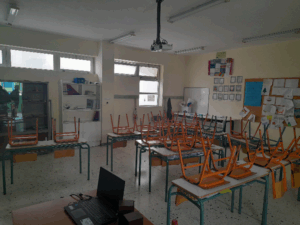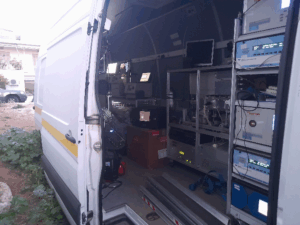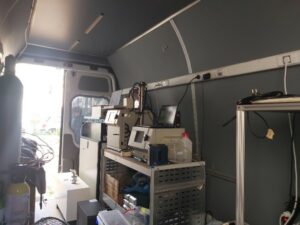
The team from the Foundation for Research and Technology – Hellas (FORTH) set out to answer that question by monitoring the indoor air quality in an elementary school classroom in Athens, during the winter of 2024.
Over a three-week period, researchers Silas Androulakis, Christos Kaltsonoudis, Eleni Dovrou, Ioannis Apostolopoulos, Angeliki Matrali, Georgia Argyropoulou, Maria Georgopoulou, Katerina Seitanidi, and Spyros Pandis used high-precision instruments and low-cost sensors to measure both gaseous and particulate pollutants.
The research revealed that pollutants from outdoors – originating from traffic, biomass burning, and atmospheric reactions – can enter the classroom. These included gases such as nitrogen dioxide (NO₂), ozone (O₃), carbon monoxide (CO), and sulfur dioxide (SO₂), as well as tiny particles (PM₁) and black carbon, while indoor sources contributed very little to this type of pollution.
Interestingly, when it came to certain chemicals called volatile organic compounds (VOCs), the main sources were found inside the classroom. On average, indoor VOC levels were six times higher than outdoor levels, driven by emissions from students (breathing and skin), building materials, furniture, and classroom supplies like markers, glues, and paints. Some VOCs also formed through chemical reactions with indoor ozone.
Notably, several detected VOCs – including formaldehyde, acetaldehyde, benzene, and styrene – are classified as carcinogenic or potentially carcinogenic. Although these compounds were present in low concentrations, no level of exposure is considered entirely safe.



Ventilation practices relied solely on natural airflow through classroom windows, which helped reduce VOC levels after school hours but were less effective during busy times like breaks. However, opening the windows also allowed outdoor pollutants to enter, sometimes raising indoor pollution levels to match those outside.
Overall, the study shows that while natural ventilation is helpful, schools need smarter ventilation strategies – ones that reduce indoor pollutant build-up without increasing exposure to outdoor air pollution. This effort is part of SynAir-G and FORTH’s ongoing mission to turn science into real-world and sustainable applications.

Stay connected! Follow Synair-G on Twitter and LinkedIn, and subscribe to the SynAir-G Newsletter to receive latest updates.
